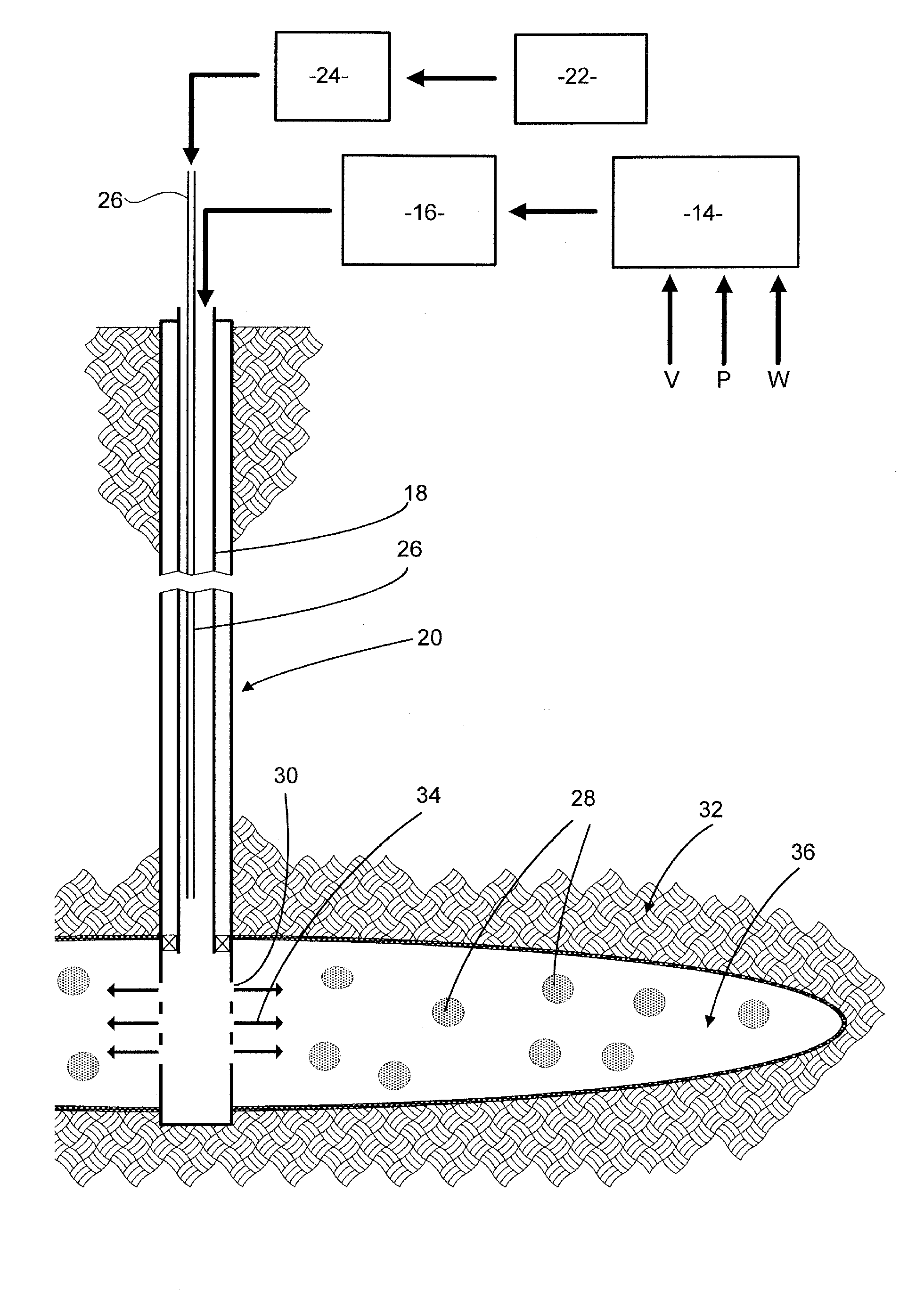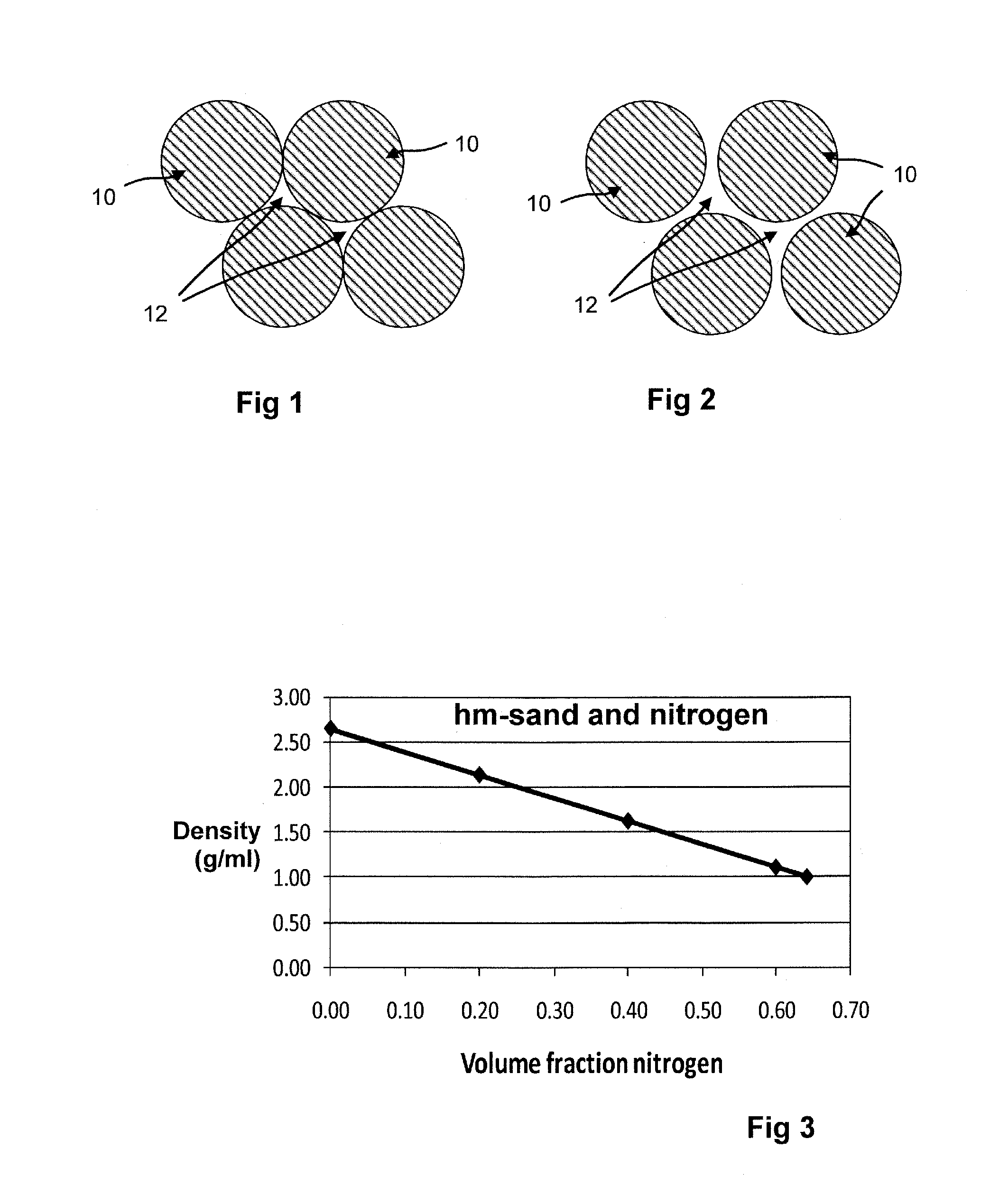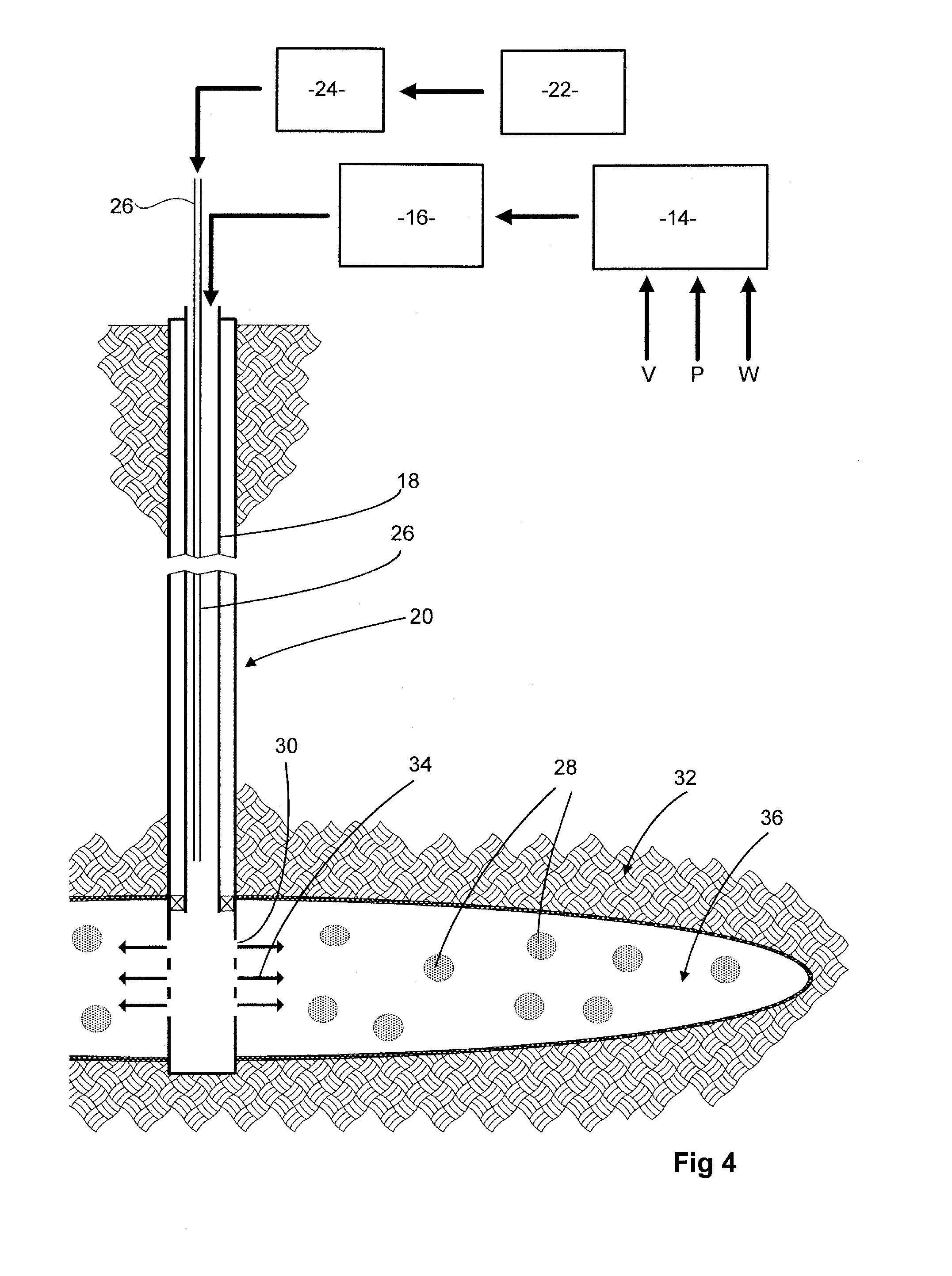Delivery of particulate material below ground
a technology of particulate material and discharge pipe, which is applied in the direction of fluid removal, borehole/well accessories, chemistry apparatus and processes, etc., can solve the problem that the amount of gas cannot be increased indefinitely, and achieve the effect of enhancing fracture conductivity, reducing permeability, and reducing permeability
- Summary
- Abstract
- Description
- Claims
- Application Information
AI Technical Summary
Benefits of technology
Problems solved by technology
Method used
Image
Examples
example 1
[0071]Sand of the required particle size was washed by mixing with ethanol at ambient temperature, then filtering, washing with deionised water and drying overnight at 80° C.
[0072]Quantities of this pre-washed sand were hydrophobically modified. 75 gm pre-washed sand was added to a mixture of 200 ml toluene, 4 ml organo-silane and 2 ml triethylamine in a 500 ml round bottomed flask. The mixture was refluxed under a nitrogen atmosphere for 4 to 6 hours. After cooling, the hydrophobically modified sand (hm-sand) was filtered off (on a Whatman glass microfiber GF-A filter) and then washed, first with 200 ml toluene, then 200 ml ethanol and then 800 ml deionised water. The hm-sand was then dried overnight at 80° C.
[0073]The above procedure was carried out using both 20 / 40 and 70 / 140 sand and using each of the following four reactive organo-silanes:
[0074]5.64 gm Heptadecafluoro-1,1,2,2-tetrahydro-decyl-triethoxysilane (>95% purity, specific gravity=1.41 gm / ml).
[0075]...
example 2
[0079]The procedure of Example 1 above was also used to bring about hydrophobic modification of two further materials having particle size as given in the following table which also includes size data for the 70 / 140 sand of the previous example.
70 / 140 sandMuscovite micaFine silicad10121 micron 50 micron 6 micrond50169 micron111 micron34 micrond90235 micron200 micron84 micron
[0080]The reactive organosilane used with both of these particulate materials was heptadecafluoro-1,1,2,2-tetrahydro-decyl-triethoxysilane. 75 gm of the particulate solid was treated with 5.89 gm of the reactive silane.
example 3
Condensation Coating
[0081]70 / 140 sand, prewashed as in Example 1 above, was given a hydrophobic surface coating by the simultaneous condensation polymerization of tetraethylorthosilicate (TEOS) and heptadecafluoro-1,1,2,2-tetrahydro-decyl-triethoxysilane in 3:1 molar ratio under basic conditions.
[0082]200 gm pre-washed sand, 12 ml of aqueous ammonia (NH4OH, 28%), 57 ml of absolute ethanol and 3 ml deionized water were mixed and stirred vigorously (Heidolph mechanical stirrer at 300-400 RPM) for 30 min. Then 0.73 gm (3.53 mmol) of TEOS and 0.63 gm (1.17 mmol) heptadecafluoro fluoro-1,1,2,2-tetrahydro-decyl-triethoxysilane were added and stirred for 3.5 hrs at room temperature. The resulting hm-sand was then filtered off, washed with ethanol and then with deionized water and dried at 120° C. overnight.
[0083]This procedure was also carried out using pre-washed 70 / 140 sand with a mixture of tetraethylorthosilicate (TEOS) and octadecyl-trimethoxysilane.
Agglomeration with Gas
[0084]FIG. 1 ...
PUM
| Property | Measurement | Unit |
|---|---|---|
| particle size d50 | aaaaa | aaaaa |
| specific gravity | aaaaa | aaaaa |
| viscosities | aaaaa | aaaaa |
Abstract
Description
Claims
Application Information
 Login to View More
Login to View More - R&D
- Intellectual Property
- Life Sciences
- Materials
- Tech Scout
- Unparalleled Data Quality
- Higher Quality Content
- 60% Fewer Hallucinations
Browse by: Latest US Patents, China's latest patents, Technical Efficacy Thesaurus, Application Domain, Technology Topic, Popular Technical Reports.
© 2025 PatSnap. All rights reserved.Legal|Privacy policy|Modern Slavery Act Transparency Statement|Sitemap|About US| Contact US: help@patsnap.com



